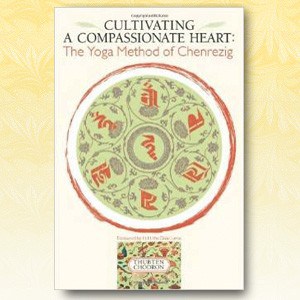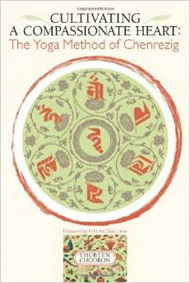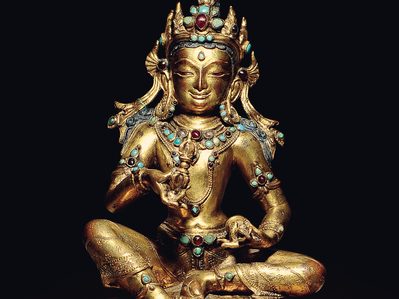Awakening compassion
Foreword to Cultivating a Compassionate Heart

The problems that we face as human beings today demand a positive mental attitude and a sense of compassion for others. I firmly believe we can solve the majority of our problems by developing a sense of universal responsibility, which is to want to do something for others without a selfish motive, out of a feeling of compassion. Moreover, the Tibetan word for this has the connotation of being courageously determined—not only thinking about others and wanting to do something for them, but actually putting these good wishes into effect.
All different religions have a special role to play in the awakening of compassion. They all realise the importance of compassion and have the potential to increase and enhance compassion and harmony. It is on the basis of this common potential that they can all understand each other and work together. On the other hand, I believe that qualities such as compassion and forgiveness are fundamental human qualities. They do not belong exclusively to religion. As a Buddhist, I believe religion evolves on the basis of our actual human nature. Religion strengthens and increases our natural positive qualities. Therefore, it is compassion rather than religion that is actually important to us. As sentient beings we are all dependent on one another, we do not exist in isolation. Therefore, as the great Indian sage Shantideva encouraged, we should help each other with the same eagerness as our hand pulls a thorn out of our foot.
The compassion of all the Buddhas appears in the form of Chenrezig, also known as Kuan Yin, Kannon, and Avalokiteshvara. I do the meditation practice of Chenrezig on a daily basis so that compassion may guide my life. However, simply praying to Chenrezig to make our hearts compassionate is not sufficient. We must practice the analytical or reflective meditations found in such valuable books as the Stages of the Path to Enlightenment (lamrim), the texts on thought transformation or mind training (lojong), and Shantideva’s Guide to the Bodhisattva’s Way of Life (Bodhicharyavatara) that have been particularly effective in helping me develop whatever sense of compassion I may have.
I have no doubt that if we cultivate these analytical meditations and focus on developing bodhichitta—the aspiration to attain enlightenment for the benefit of all beings—in conjunction with the yoga method of Chenrezig, it will serve as an effective way to diminish our self-centeredness and open our hearts to others, as we generate compassion for them and for ourselves. I am confident that the twofold approach presented in this meditation manual of actively transforming the mind into compassion by means of reflective meditation, as well as by the visualization of Chenrezig and recitation of his mantra, has the potential to be particularly effective.
Over the many years that I have known her, Bhikshuni Thubten Chodron has often impressed me with her practical, clear-sighted, down to earth approach to spiritual practice. Just as carpenters or masons first prepare their tools and gather the necessary materials together before beginning whatever they are going to construct, so in this book she has assembled the instructions, inspiration, and advice from her own experience for cultivating a compassionate heart; what remains is for readers who are interested to put them into effect. I offer my prayers that all those who seek to apply them sincerely will be blessed with success, for the benefit of others and themselves.
His Holiness the Dalai Lama
His Holiness the 14th Dalai Lama, Tenzin Gyatso, is the spiritual leader of Tibet. He was born on July 6, 1935, to a farming family, in a small hamlet located in Taktser, Amdo, northeastern Tibet. At the very young age of two, he was recognized as the reincarnation of the previous 13th Dalai Lama, Thubten Gyatso. The Dalai Lamas are believed to be manifestations of Avalokiteshvara or Chenrezig, the Bodhisattva of Compassion and the patron saint of Tibet. Bodhisattvas are believed to be enlightened beings who have postponed their own nirvana and chosen to take rebirth in order to serve humanity. His Holiness the Dalai Lama is a man of peace. In 1989 he was awarded the Nobel Peace Prize for his non-violent struggle for the liberation of Tibet. He has consistently advocated policies of non-violence, even in the face of extreme aggression. He also became the first Nobel Laureate to be recognized for his concern for global environmental problems. His Holiness has traveled to more than 67 countries spanning 6 continents. He has received over 150 awards, honorary doctorates, prizes, etc., in recognition of his message of peace, non-violence, inter-religious understanding, universal responsibility and compassion. He has also authored or co-authored more than 110 books. His Holiness has held dialogues with heads of different religions and participated in many events promoting inter-religious harmony and understanding. Since the mid-1980’s, His Holiness has begun a dialogue with modern scientists, mainly in the fields of psychology, neurobiology, quantum physics and cosmology. This has led to a historic collaboration between Buddhist monks and world-renowned scientists in trying to help individuals achieve peace of mind. (Source: dalailama.com. Photo by Jamyang Dorjee)


